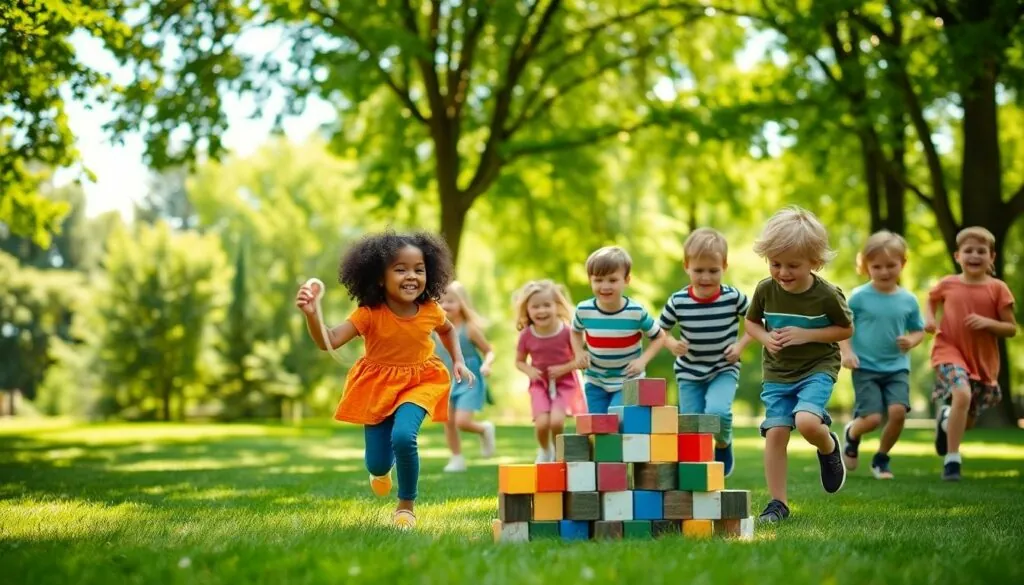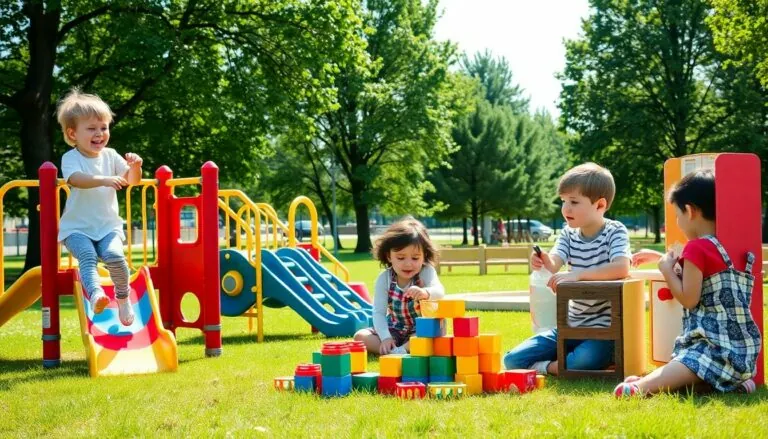Table of Contents
ToggleUnderstanding child development can feel like trying to decipher a toddler’s tantrum—confusing and a bit chaotic. Yet, it’s crucial for parents, educators, and caregivers to grasp the five domains of child development. These domains provide a roadmap for nurturing a child’s growth, ensuring they flourish emotionally, socially, physically, cognitively, and linguistically.
Overview of the 5 Domains of Child Development
Five domains of child development encompass various aspects critical to a child’s growth. They include emotional, social, physical, cognitive, and linguistic development. Each domain contributes uniquely to a child’s overall well-being and functioning.
Emotional Development refers to the ability to understand, manage, and express feelings. Children learn to recognize emotions in themselves and others. They also develop coping strategies for handling emotional challenges.
Social Development focuses on how children interact with peers and adults. Skills such as sharing, cooperation, and conflict resolution play a vital role. Through social experiences, children build relationships and gain an understanding of social norms.
Physical Development involves both fine and gross motor skills. Fine motor skills include grasping and manipulating objects, while gross motor skills involve larger movements like running and jumping. Physical activities promote health and enhance coordination.
Cognitive Development pertains to the mental processes used for thinking, learning, and problem-solving. Children explore concepts through play and structured activities. Engaging in critical thinking during these interactions fosters intellectual growth.
Linguistic Development encompasses the acquisition of language and communication skills. Children learn to express thoughts, ask questions, and engage in conversations. Early language exposure significantly impacts vocabulary and comprehension abilities.
Understanding these five domains offers valuable insights for parents, educators, and caregivers. Each domain interacts, shaping a child’s overall development, and emphasizing the importance of a holistic approach in nurturing growth.
Physical Development
Physical Development plays a crucial role in a child’s overall growth. This domain focuses on enhancing children’s movement abilities and maintaining good health through proper nutrition.
Motor Skills
Motor Skills encompass both fine and gross skills necessary for everyday activities. Fine motor skills include hand-eye coordination and dexterity, essential for tasks like writing or using utensils. In contrast, gross motor skills involve larger movements, such as walking, running, and jumping. Activities targeting these skills, like playing with blocks or climbing, help children improve coordination and strength. Encouraging children to participate in sports and outdoor games fosters these abilities, ensuring they develop properly as they grow.
Health and Nutrition
Health and Nutrition directly influence physical development in children. A balanced diet rich in fruits, vegetables, whole grains, and proteins supports growth and energy levels. Children who receive adequate nutrition exhibit better cognitive functioning and physical stamina. Regular physical activity complements a healthy diet, promoting cardiovascular health and muscle development. According to the CDC, children need at least 60 minutes of physical activity daily for optimal health. Incorporating fun activities into daily routines, like family walks or sports, enhances both nutrition and physical strength.
Cognitive Development
Cognitive Development plays a vital role in shaping a child’s ability to think and learn. This domain encompasses the mental processes that allow children to gain knowledge and understand their environment.
Learning and Thinking Skills
Learning and thinking skills form the foundation for a child’s cognitive abilities. Children develop critical thinking through exploration and hands-on experiences. Engaging in age-appropriate activities like puzzles and games promotes brain development. Interactive play encourages curiosity, problem-solving, and decision-making. Therefore, fostering environments rich in stimulation and challenges supports these essential skills. Early exposure to diverse subjects enhances comprehension and reasoning, facilitating a child’s academic readiness.
Problem Solving
Problem-solving constitutes a key aspect of cognitive development. Children encounter various challenges as they grow, requiring them to think critically and creatively. Simple tasks, such as building blocks or matching games, cultivate logical reasoning. Working through obstacles builds perseverance and adaptability. Encouraging children to express their thought processes also deepens their understanding. Frequent interaction with others facilitates the development of collaborative problem-solving skills. As they navigate challenges, children build confidence in their abilities, which prepares them for more complex tasks in the future.
Social and Emotional Development
Social and emotional development significantly influences a child’s ability to connect with others. This domain encompasses how children build relationships and manage feelings, which contributes to their overall well-being.
Relationships and Interactions
Building strong relationships with peers and adults plays a crucial role in development. Children learn to navigate social norms through interaction, sharing, and collaborating during play. They explore turn-taking and empathy, which fosters a sense of belonging and social competence. Positive interactions with caregivers provide security and model appropriate social behaviors. Engaging in group activities enhances teamwork and communication skills. Children who interact with diverse groups often develop better conflict resolution skills.
Emotional Regulation
Emotional regulation impacts how children express and manage their feelings. Developing this skill enables children to cope with frustrations and navigate stressful situations. They learn to identify emotions and understand their triggers through supportive relationships. Practicing mindfulness techniques can enhance emotional awareness. Role-playing different scenarios encourages children to express feelings verbally and appropriately. Gradually, they become more adept at self-soothing and managing their reactions in challenging circumstances. Building resilience is key in this process, equipping children with tools to handle life’s ups and downs.
Language and Communication Development
Language and communication development encompasses the skills necessary for expressing thoughts and engaging with others effectively. It plays a critical role in a child’s ability to connect with their environment and the people around them.
Speech and Language Skills
Speech and language skills determine how children communicate their needs, thoughts, and feelings. The development of these skills begins with babbling during infancy, progressing to single words around 12 months. By 24 months, children often form simple two-word phrases. Vocabulary expands rapidly during preschool years, reaching over 1,000 words by age four. Reading together reinforces these skills further, enhancing comprehension and articulation. Engaging in conversations also provides opportunities for children to practice and refine their language abilities, fostering confidence in their communication.
Nonverbal Communication
Nonverbal communication serves as a vital part of expressing emotions and intentions. Children often use facial expressions, gestures, and body language to convey messages before mastering verbal communication. Smiling, pointing, or frowning can reveal feelings and reactions. By observing others, they learn to interpret cues and respond appropriately. Developing these nonverbal skills contributes to social interactions, shaping the way children relate to peers and adults. Activities that encourage expressive arts or role-play can enhance understanding of nonverbal communication, providing essential tools for effective interactions in various settings.
Conclusion
Understanding the five domains of child development is crucial for anyone involved in a child’s upbringing. Each domain plays a vital role in shaping a child’s overall growth and well-being. By recognizing the interconnectedness of emotional, social, physical, cognitive, and linguistic development, parents and caregivers can create supportive environments that foster healthy growth.
Implementing strategies that encourage exploration and interaction will empower children to thrive. Nurturing these domains not only enhances individual skills but also builds a strong foundation for future success. Emphasizing a holistic approach ensures that every aspect of a child’s development is addressed, paving the way for a brighter future.








